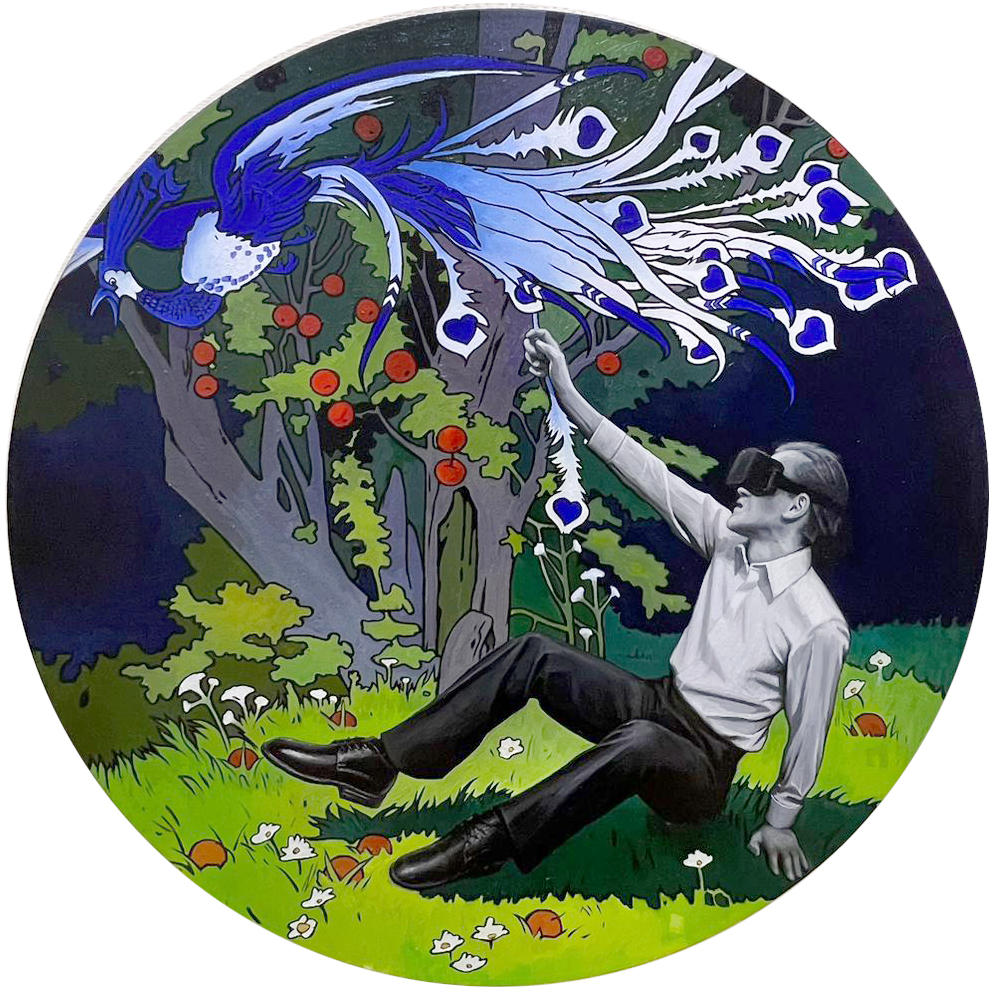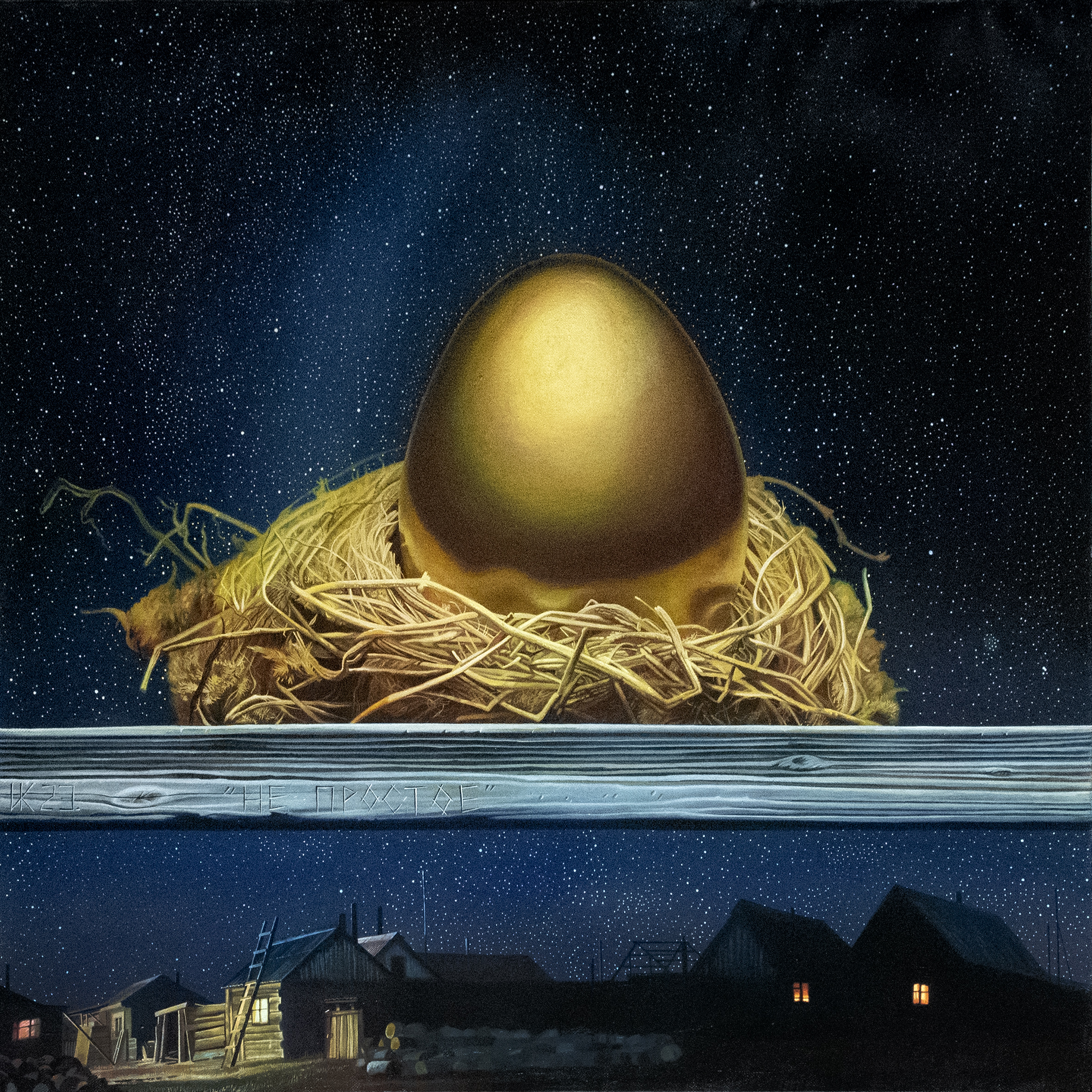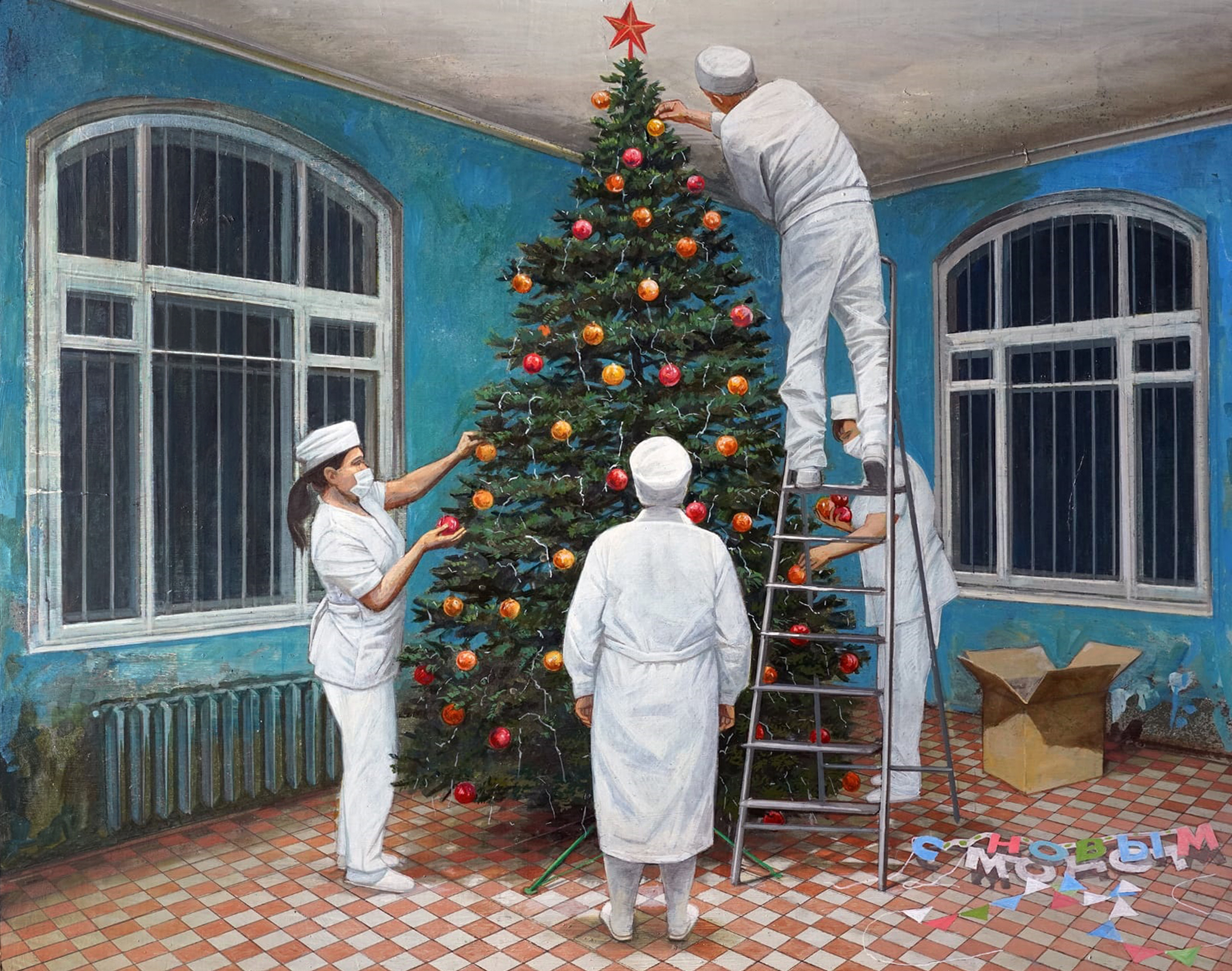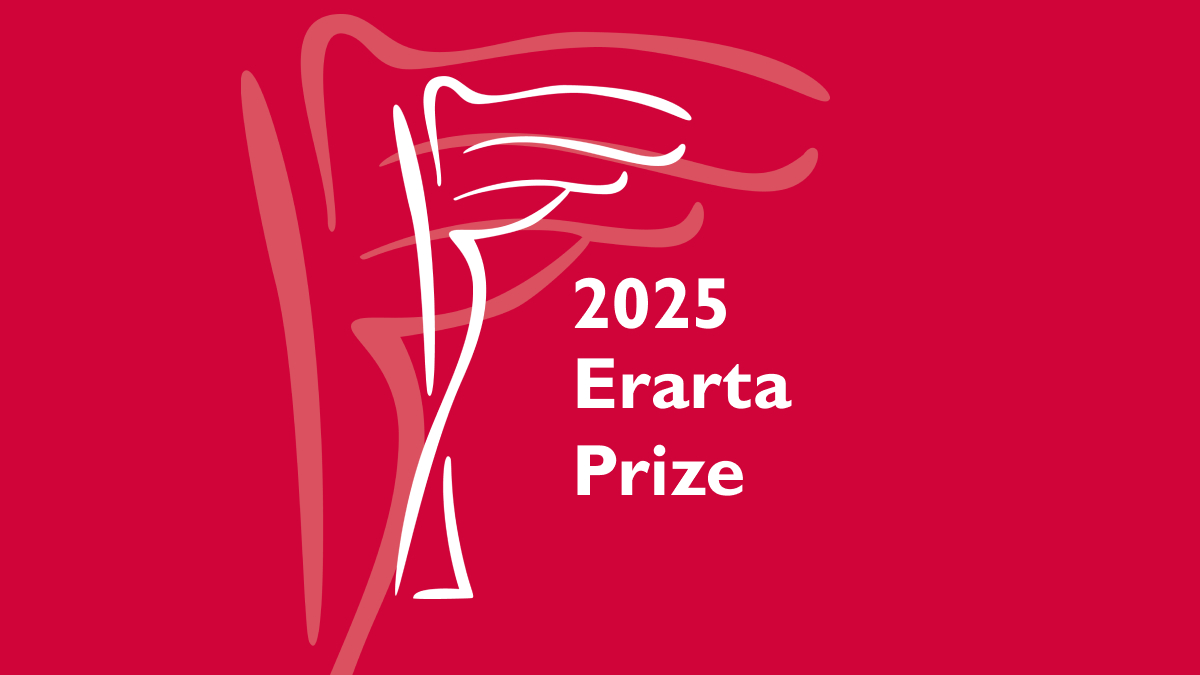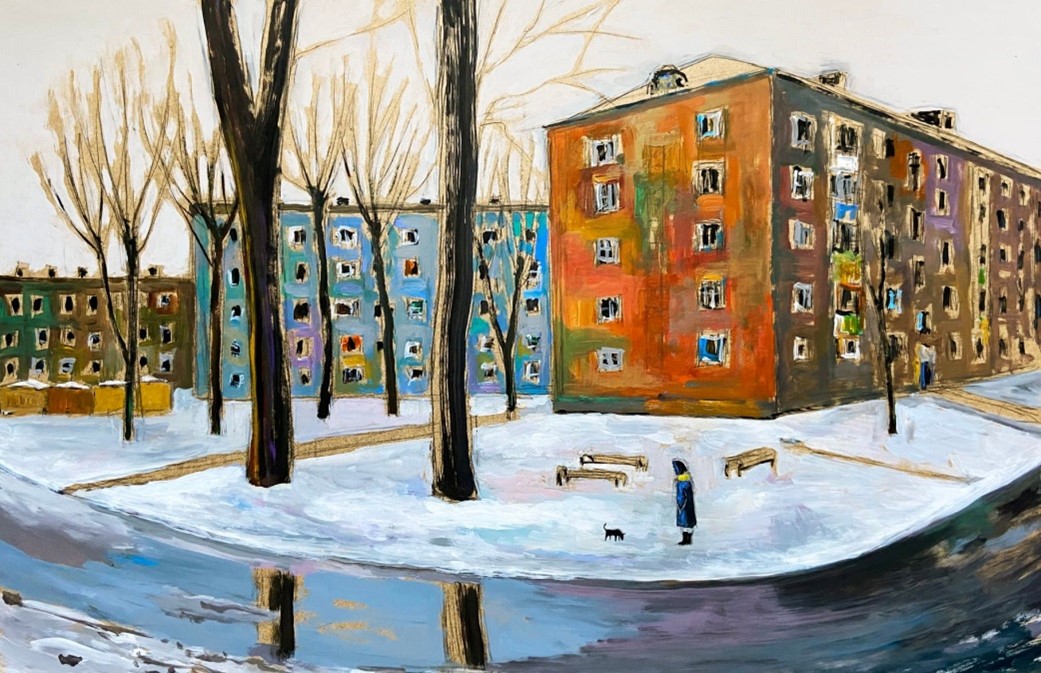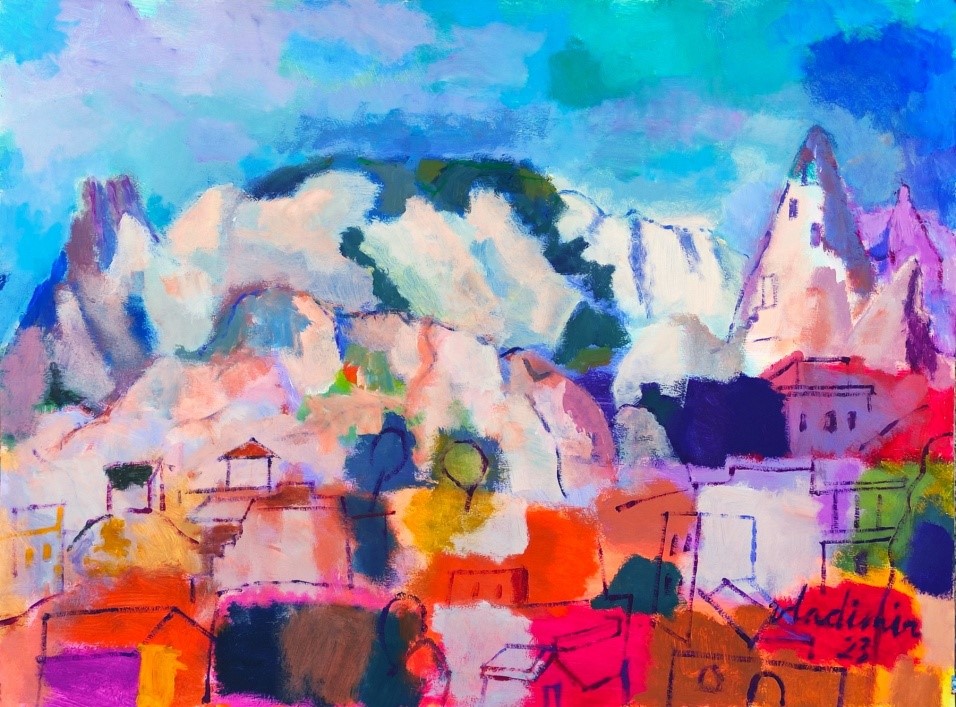Erarta Museum of Contemporary Art presented an exhibition of artworks by eleven Moscow-based artists sharing an interest in the world of the fairy tale
-
A bridge linking our down-to-earth reality and the realm of wondrous invention
-
Experiments of established artists free of drama or artifice
-
Time-honoured folktale narratives unfolding amid a modern-day setting
This exhibition is a brainchild of the painter and 2023 Erarta Prize winner Anastasia Kuznetsova-Ruf. All Sorts of Fairy Tales is a showcase of works by 11 renowned Moscow-based artists, each in their own way distinctive and vivid presences in the contemporary visual art scene. Nearly all of them are the alumni of the Vasily Surikov Moscow State Academic Art Institute and all represent the positive growth vector of Russian figurative arts.
The project brings together such national contemporary art greats as the charismatic Vladimir Dubossarsky, Alexander Savko, and Georgy Ostretsov, as well as members of the younger generation born in the 1980s whose style is sometimes defined as the New Realism. Maria Safronova, Anton Kuznetsov, Ivan Korshunov, Anastasia Kuznetsova-Ruf, Yegor Plotnikov, Ekaterina Belyavskaya, Daria Kotlyarova, and Timofey Smirnov are all accomplished and highly visible artists. Each of them has an instantly recognisable manner and explores his or her own range of subjects.
What these artists have in common, however, is their interest in the world of the fairy tale – albeit not in the sense of literary analysis of folk tales’ typology and structure or verbatim retelling of folkloric narratives. There is more of a desire to enter the magic realm and revisit the well-known stories, perhaps enhancing them with new details – belonging to our times, but in strict compliance with the rules of the genre. The artists reimagine folk motifs and characters using various approaches, from illustration to allegory, thus bridging the gap between the down-to-earth and machine-driven reality of today and the world of handmade beauty and wondrous invention. There are all sorts of fairy tales: funny and scary, absurd and surprising, modern and traditional, those for kids and those for adults. A typical fairy tale disarms and enchants the readers, helping them become kinder and purer at heart. Here, too, it presents the established Moscow artists featured in museum collections and prestigious ratings in a new light – without drama or artifice and within a whimsical fairy-tale context.
Despite the fact that the fairy tale is typically considered to be a literary form for kids, it constitutes a serious genre closely linked to mythology and philosophy and preserving some fundamental, universal knowledge. Back in the 1920s, Soviet scholar Vladimir Propp who studied the structure of folk tales wondered, ‘How is one to explain the similarity of the tale about the frog queen in Russia, Germany, France, India, in America among the Indians, and in New Zealand?’ Each culture has its fairy tales. A folk tale is almost universally apprehensible. It teaches us mutual understanding and helps us deal with seemingly irresolvable issues without losing hope in miracles and faith in supernatural forces. Tale of sense, if not of truth, as the saying goes . . .
The project featured at Erarta is interesting not only thematically, but also stylistically and phenomenologically: it offers an opportunity to experience different artistic worlds in a single physical and semantic space. The exhibition also reflects the current state of Russian contemporary art, demonstrating both its continuity and the shift in generations and priorities.


